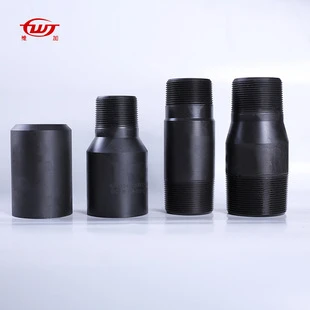- Afrikaans
- Albanian
- Amharic
- Arabic
- Armenian
- Azerbaijani
- Basque
- Belarusian
- Bengali
- Bosnian
- Bulgarian
- Catalan
- Cebuano
- Corsican
- Croatian
- Czech
- Danish
- Dutch
- English
- Esperanto
- Estonian
- Finnish
- French
- Frisian
- Galician
- Georgian
- German
- Greek
- Gujarati
- Haitian Creole
- hausa
- hawaiian
- Hebrew
- Hindi
- Miao
- Hungarian
- Icelandic
- igbo
- Indonesian
- irish
- Italian
- Japanese
- Javanese
- Kannada
- kazakh
- Khmer
- Rwandese
- Korean
- Kurdish
- Kyrgyz
- Lao
- Latin
- Latvian
- Lithuanian
- Luxembourgish
- Macedonian
- Malgashi
- Malay
- Malayalam
- Maltese
- Maori
- Marathi
- Mongolian
- Myanmar
- Nepali
- Norwegian
- Norwegian
- Occitan
- Pashto
- Persian
- Polish
- Portuguese
- Punjabi
- Romanian
- Russian
- Samoan
- Scottish Gaelic
- Serbian
- Sesotho
- Shona
- Sindhi
- Sinhala
- Slovak
- Slovenian
- Somali
- Spanish
- Sundanese
- Swahili
- Swedish
- Tagalog
- Tajik
- Tamil
- Tatar
- Telugu
- Thai
- Turkish
- Turkmen
- Ukrainian
- Urdu
- Uighur
- Uzbek
- Vietnamese
- Welsh
- Bantu
- Yiddish
- Yoruba
- Zulu
api tubing and casing chart
Understanding the API Tubing and Casing Chart
The API tubing and casing chart is a crucial resource for professionals in the petroleum and natural gas industries. This chart provides detailed specifications for the design and selection of tubing and casing, both vital components in the drilling and production processes of oil and gas wells. Understanding this chart is essential for ensuring safety, efficiency, and compliance with industry standards.
What are Tubing and Casing?
Before diving into the specifics of the API chart, it's important to clarify the terms tubing and casing. Casing refers to large-diameter pipes that are cemented into the wellbore to provide structural integrity and isolate different underground formations. Tubing, on the other hand, is a smaller diameter pipe inserted into the casing system to allow for the production of hydrocarbons from the reservoir to the surface.
API Standards and Specifications
The American Petroleum Institute (API) sets the standards and specifications for various components used in the oil and gas industry, including tubing and casing. These standards ensure compatibility, safety, and performance across different applications and equipment types. The API tubing and casing chart includes crucial information, such as outer diameter, wall thickness, and weight per unit length.
One of the primary purposes of the chart is to help engineers select the appropriate type of tubing and casing for specific well conditions, which may vary greatly depending on factors such as depth, pressure, and the type of formation being drilled. Different grades of steel and alloys are used in tubing and casing to withstand various environmental stresses, which is detailed in the API chart.
Key Components of the API Tubing and Casing Chart
api tubing and casing chart

2. Specifications for Grades Each type of tubing and casing is classified into different grades, which denote the strength and corrosion resistance of the material. Common grades include J-55, K-55, N-80, and P-110, among others. The selection of the appropriate grade depends on the specific application and environmental conditions.
3. Weight The chart lists the weight of each tubing and casing type per unit length, which is important for handling, transportation, and installation processes. Knowing the weight also impacts the design of lifting equipment and how the overall well structure is planned.
4. Connection Types Tubing and casing can be connected using various methods, including threaded connections, welds, or coupling systems. The chart provides information on the compatible connection types for each tubing and casing specification.
5. Pressure Ratings One of the critical aspects of the API chart is its listing of pressure ratings for different grades and types of tubing and casing. These ratings help ensure that the selected components can withstand the operational pressures they will encounter.
Applications in Drilling and Production
The proper selection of tubing and casing can significantly affect the success of drilling and production operations. Incorrect choices can lead to equipment failure, loss of production, or even catastrophic accidents. Therefore, drilling engineers carefully analyze the API tubing and casing chart to choose the most suitable specifications based on well requirements.
In addition, the chart is a vital reference during the regulatory compliance processes, ensuring that all materials and designs meet local and international safety regulations.
Conclusion
Understanding the API tubing and casing chart is fundamental for anyone involved in the oil and gas industry. By familiarizing themselves with the specifications, features, and applications of tubing and casing as outlined in the chart, professionals can make informed decisions that enhance safety, efficiency, and productivity in their operations. Always referring to this chart during the planning and execution stages will aid in preventing issues and ensuring successful project outcomes.
-
Tubing Pup Joints: Essential Components for Oil and Gas OperationsNewsJul.10,2025
-
Pup Joints: Essential Components for Reliable Drilling OperationsNewsJul.10,2025
-
Pipe Couplings: Connecting Your World EfficientlyNewsJul.10,2025
-
Mastering Oilfield Operations with Quality Tubing and CasingNewsJul.10,2025
-
High-Quality Casing Couplings for Every NeedNewsJul.10,2025
-
Boost Your Drilling Efficiency with Premium Crossover Tools & Seating NipplesNewsJul.10,2025







